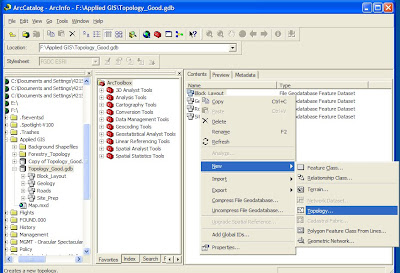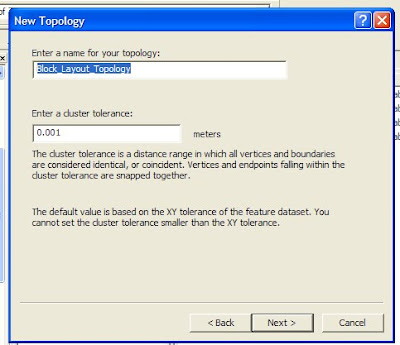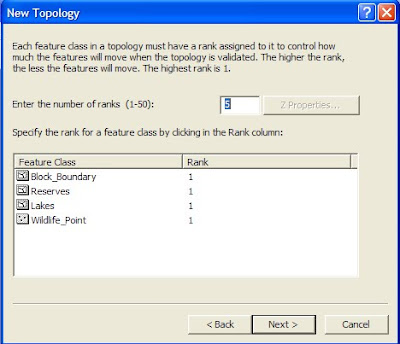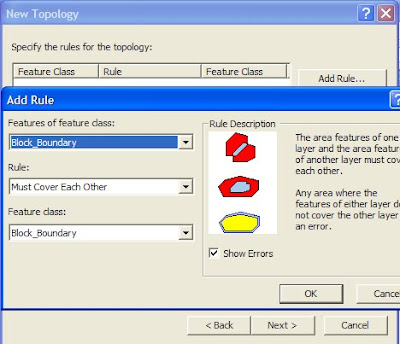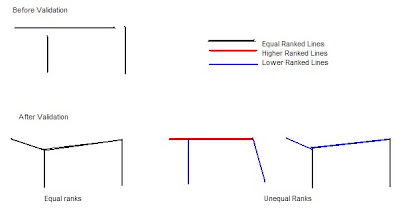To clarify a previous post where the project's topology rules are stated, the following is an explanation of each given topology rule in detail.
Must contain point
A polygon in one feature class must contain a point from another feature class. The point must be within the polygon, not on the boundary.
Used to ensure each lease polygon contains a resource extraction point.Endpoint must be covered by
The endpoint of a line must be covered by a point from another feature class.
Used to ensure each pipeline ends in a resource extraction point.Must be properly inside
Requires that all the points of one feature class fall within the polygons of another feature class.
Used to ensure that each resource extraction point falls within a polygon.Must not overlap
A line feature cannot overlap another line of the same feature class.
Used to ensure that creeks and roads never share segments but can still intersect.
Must not self overlap
Ensures that a line feature cannot overlap itself.
This will be used with roads that end in a loop, ensuring the loop doesn't overlap the remainder of the road.Must be covered by
Points from one feature class must be covered by a line in another feature class.
This will be used to ensure that all crossings are located along a segment of a road.Must not overlap with
The interior of one polygon cannot overlap with that of another polygon in a different feature class.
This will be used to ensure that boundary polygons do not overlap lakes.Must not overlap
The interior of one polygon cannot intersect another polygon of the same feature class.
This will be sued to ensure that reserves do not overlap.Must not have gaps
This rule ensures that there no voids or gaps within a polygon or beside adjacent polygons of the same feature class.
This will be used to ensure that site prep polygons all fit tightly togther within a harvest black boundary without any gaps.Must cover each other
Requires that the polygons of one feature class must share all of their area with the polygons of another feature class.
This will be used to ensure that the site prep polygons fit exactly on top of the harvested blocks polygon.



